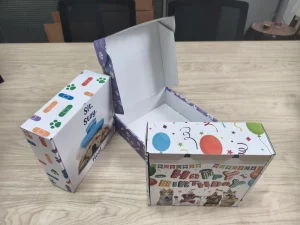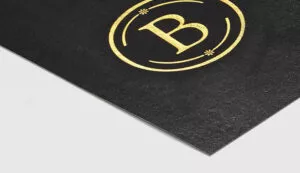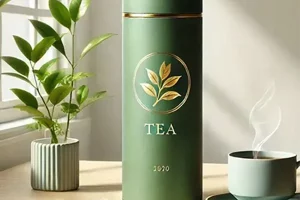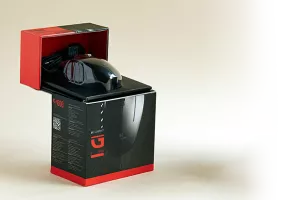Carton boxes are the backbone of modern packaging. They’re used in almost every industry, from electronics to food. But what exactly is a carton box, and why is it so popular?
A carton box is a type of packaging made from paperboard or corrugated fiberboard. It’s designed for transporting goods safely and efficiently. Carton boxes are lightweight, sturdy, and versatile, making them an excellent choice for packaging various products.

Now that we’ve covered what a carton box is, let’s explore its advantages, its differences from other packaging materials, and why it’s become a go-to choice for businesses.
What are the advantages of cardboard packaging?
When it comes to packaging, cardboard is one of the most widely used materials. But why is it so popular? Let’s dive into the advantages of cardboard packaging.
Cardboard packaging is durable, lightweight, cost-effective, and eco-friendly. It provides excellent protection for products, making it a top choice for businesses that need reliable packaging solutions.

Cardboard packaging offers several key advantages that make it an essential part of the packaging industry.
Odolnost
Cardboard boxes are incredibly durable. The use of corrugated fiberboard adds an extra layer of strength, providing protection from impact during transportation. This ensures that your products reach their destination safely and intact.
Nákladová efektivita
Compared to materials like plastic or metal, cardboard is relatively inexpensive. It’s also lightweight, which reduces shipping costs. This makes it a cost-effective solution for businesses of all sizes.
Eco-Friendliness1
With the rise in demand for sustainable practices, cardboard stands out as an eco-friendly option. It’s made from renewable resources and is biodegradable. Many cardboard boxes are also recyclable, reducing waste in landfills.
Customizability
Cardboard can be easily customized. Businesses can print logos, designs, and information directly onto the boxes, helping brands stand out. Additionally, cardboard can be shaped into various sizes and forms to suit the product inside.
What is another name for a carton box?
A carton box is a common term, but it’s not the only name for it. Are there other terms you might encounter when discussing packaging?
Carton boxes are also known as "cardboard boxes" or "shipping boxes." Depending on the context, these terms are often used interchangeably to refer to the same type of packaging.

The term “carton box” is commonly used to describe packaging made from corrugated fiberboard or paperboard. However, different regions or industries may use other terms to describe the same item.
Cardboard Box
Often, carton boxes are referred to as "kartonové krabice" because they are made from paperboard or corrugated cardboard. While this term may seem like a synonym, it’s more specific to the material than the design of the box itself.
Shipping Box
In the shipping industry, carton boxes are often called "shipping boxes." This term highlights the box’s main function: to transport goods from one location to another. The term is often used when the box is used for logistics and distribution.
Krabice z vlnité lepenky
Corrugated boxes refer specifically to boxes made from corrugated cardboard, which has a fluted layer between two flat layers of paperboard. These are stronger and more durable than regular cardboard boxes, making them ideal for shipping and heavy-duty use.
What is the difference between a carton and a cardboard box?
While the terms "carton" and "cardboard box" are often used interchangeably, there are subtle differences. Let’s break it down.
The primary difference between a carton and a cardboard box is the structure. A carton is usually a box made from paperboard or corrugated fiberboard, while a cardboard box refers specifically to the material used. Both are types of packaging, but the terminology can vary depending on the context.

Understanding the difference between carton boxes and cardboard boxes can be tricky, especially since they’re often used interchangeably. Let’s look at the distinctions:
Carton Box
A carton box typically refers to a box made from paperboard or corrugated fiberboard. It is designed for the packaging of products and is generally lightweight, versatile, and easy to customize. Cartons are often used for storing or transporting goods over short to medium distances.
Cardboard Box
"Cardboard box" is a more specific term used to describe boxes made from a specific type of paperboard. While all carton boxes are cardboard boxes, not all cardboard boxes are carton boxes. Cardboard is the material used, and boxes made from this material can be single-ply or multi-ply, offering varying degrees of strength.
Structural Differences
The key structural difference is that carton boxes typically have a three-layer construction (the fluted middle layer between two smooth outer layers) for added strength. Cardboard boxes, on the other hand, can refer to both single-ply and multi-ply boxes, depending on the need.
Is carton packaging better than plastic?
As environmental concerns grow, businesses are increasingly turning to carton packaging. But is it better than plastic? Let’s explore the pros and cons of both materials.
Carton packaging is considered more sustainable than plastic due to its biodegradability, recyclability, and use of renewable resources. Plastic packaging, on the other hand, takes hundreds of years to degrade and is often harmful to the environment.

When choosing between carton and plastic packaging, several factors come into play. Both materials have their own unique benefits and limitations, but when it comes to sustainability, carton packaging is often the superior choice.
Environmental Impact
Carton packaging is biodegradable and recyclable, making it a more eco-friendly option. In contrast, plastic takes hundreds of years to break down and can end up in landfills or oceans, causing long-term environmental harm. With increasing pressure to reduce plastic waste, carton boxes are becoming a preferred choice for udržitelné obaly1.
Odolnost a ochrana
While plastic packaging is often more durable and resistant to moisture, carton packaging offers sufficient protection for many products. For items that need extra durability, corrugated cardboard provides a strong, sturdy solution.
Consumer Perception
Consumers today are more aware of the environmental impact of their purchases. Packaging made from sustainable materials like cardboard can improve brand perception and attract environmentally conscious customers. Plastic packaging, on the other hand, may be seen as less eco-friendly.
Conclusion
Carton boxes are a versatile and eco-friendly packaging solution. While both carton and plastic have their benefits, the growing demand for sustainability makes carton packaging the better option in many cases.








